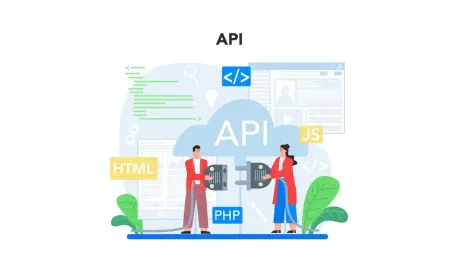API testing has become an indispensable part of modern software development. As we look towards the future, understanding advanced tools and techniques for API testing is crucial for ensuring robust, secure, and efficient software applications. Organizations are increasingly relying on APIs to connect disparate systems, enhance functionality, and improve user experiences, making the need for reliable API testing more important than ever. By ensuring software interfaces work correctly and securely, API testing verifies data transmissions, error handling, and performance under various conditions. This proactive approach helps identify problems early in the development cycle, saving time and resources while ensuring that applications function as intended.
As we advance into 2025 and beyond, the methodologies and tools for API testing continue to evolve, promising more efficient and comprehensive testing. These advancements not only ensure the seamless operation of interconnected systems but also fortify software against potential security threats, data mishandlings, and performance bottlenecks. By delving into the various facets of API testing, such as techniques, crucial tools, and best practices, developers can equip themselves with the knowledge and expertise needed to maintain the highest standards in software quality assurance.
The Importance of API Testing in Modern Development
API testing plays a crucial role in discovering issues that could eventually affect end-users, including unexpectedly identifying security flaws, performance bottlenecks, and data handling errors early in the development cycle. Given that APIs often serve as the connective tissue between different systems, a failure in one API can lead to significant disruptions across multiple connected applications. This interconnectedness heightens the importance of thorough API testing in ensuring the reliability, security, and overall functionality of software applications.
Good API testing practices not only prevent these critical issues but also contribute significantly to the overall quality of the software. In a landscape where APIs are becoming more integral to software architecture, ensuring their reliability and security is paramount. Furthermore, comprehensive API testing supports better integration within diverse ecosystems, thereby enhancing user satisfaction and maintaining the integrity of complex software environments. As software systems grow in complexity, the role of effective API testing in safeguarding system stability and performance becomes increasingly indispensable.
Comparing REST and SOAP APIs
REST APIs have gained widespread popularity due to their simplicity, scalability, and efficiency in handling web and mobile application functionalities. Utilizing simple HTTP methods such as GET and POST, REST APIs typically employ JSON or XML data formats, making them ideal for rapid and lightweight communication. Their ability to scale well and handle various data types with ease has solidified their position in modern software development, particularly where speed and simplicity are of the essence.
In contrast, SOAP APIs follow a different paradigm, adhering to a more rigid set of protocols that ensure robust data transmission, security, and error handling. SOAP (Simple Object Access Protocol) exclusively uses XML for data transmission, making it somewhat less efficient in terms of performance but highly reliable in industries that require stringent security measures, such as banking and healthcare. The built-in security features and comprehensive error handling mechanisms of SOAP APIs make them suitable for applications where data integrity and reliability are critical.
API Testing Techniques
Functional testing is a fundamental technique in API testing that ensures the responses from an API are as expected by comparing actual outcomes with specified requirements. This involves validating response codes, data formats, and payloads, as well as testing various scenarios including both valid and invalid inputs. Through meticulous functional testing, development teams can ascertain that the API behaves as anticipated across different use cases, ensuring robustness and reliability.
Performance testing stands out as another critical technique, aimed at measuring API response times and resource usage under various conditions. This includes load testing, which assesses how the API performs under expected user loads, and stress testing, which evaluates its performance when subjected to extreme conditions. By gauging how APIs respond to different levels of demand, performance testing ensures they can handle real-world usage without degradation, providing a seamless experience for end-users even during peak loads.
Security and Reliability Testing
Security testing is imperative for ensuring that APIs are fortified against potential cyber threats and unauthorized access. This involves verifying authentication and authorization mechanisms, ensuring data privacy, conducting thorough input validation, and implementing robust threat protection measures. In an era where data breaches are increasingly common and costly, effective security testing is essential to safeguarding sensitive information and maintaining user trust.
Reliability testing complements security testing by assessing the stability and availability of APIs under various conditions. This involves evaluating how APIs handle network issues, failures, and disruptions, ensuring they can recover gracefully from unexpected events. By rigorously testing the reliability of APIs, development teams can ensure that these vital components remain functional even during adverse conditions, thereby maintaining the overall resilience of software systems.
Key Tools for API Testing
Postman has become an indispensable tool for many developers due to its intuitive interface and comprehensive features. Beyond simple request building, Postman offers environment management, pre-request and test scripting capabilities, mock servers, and sophisticated team collaboration tools. These features streamline the testing process, allowing teams to efficiently design, execute, and document their API tests, thus ensuring consistent and thorough validation across various development environments.
Swagger.io, on the other hand, focuses on making API development and testing more accessible through the use of the OpenAPI specification. SwaggerHub aids in designing APIs with a user-friendly interface, allowing for collaborative development and consistent API documentation. Swagger Inspector facilitates the testing process, ensuring that APIs conform to their specifications and providing insights into their performance. Together, these tools support the development of well-documented and reliable APIs that adhere to industry standards.
Advanced API Testing Tools
SoapUI offers extensive capabilities for testing both SOAP and REST APIs, boasting features that allow users to perform sophisticated data-driven testing. This makes it an ideal choice for complex testing scenarios where APIs need to handle various data inputs and outputs. The Pro version of SoapUI extends its functionality with advanced features, such as built-in security testing and enhanced user interface, making it a comprehensive solution for robust API testing.
JMeter, renowned for its expertise in performance testing, simulates heavy loads and provides detailed metrics that help developers understand how APIs perform under stress. By generating reports on response times, error rates, and resource consumption, JMeter enables development teams to pinpoint performance bottlenecks and optimize their APIs to handle high traffic scenarios effectively. This capability is crucial for ensuring that APIs remain performant and reliable under peak usage conditions.
Automating API Testing
Automation has become a cornerstone of modern API testing, offering substantial benefits such as time savings, reduced human error, and enhanced testing efficiency. By integrating automated testing into development workflows, teams can ensure consistent test execution and early detection of bugs. This continuous validation process is vital for maintaining high-quality standards, especially in agile development environments where software changes frequently.
Selecting the right automation tools is critical for achieving smooth and effective API testing. Factors to consider include ease of use, language support, and comprehensive reporting features. Tools that offer these characteristics streamline the automation process, making it accessible to a broader range of team members while providing detailed insights into test results. This holistic approach to automation ensures that testing remains efficient, thorough, and well-integrated into the overall development lifecycle.
Integrating with CI/CD Pipelines
The integration of API testing with Continuous Integration and Continuous Deployment (CI/CD) pipelines is essential for maintaining code quality and ensuring that changes do not introduce new bugs. By automating tests to run with each code change, using tools like Jenkins, GitLab CI, and GitHub Actions, teams can achieve continuous validation and immediate feedback on code health. This practice enhances the development process by catching issues early, reducing the risk of defects reaching production.
To maximize the effectiveness of CI/CD integration, tests should be executed at multiple stages of the pipeline, including development, code merging, and pre-production deployment. This multi-stage testing ensures comprehensive coverage and early identification of potential issues. By incorporating API testing into the CI/CD workflow, teams can ensure that APIs remain reliable, secure, and performant throughout the development lifecycle, ultimately delivering higher-quality software to end-users.
API Performance Metrics
Analyzing API performance involves measuring key metrics that reflect responsiveness and scalability, essential for maintaining service quality. Response time is a critical metric, ideally kept under 100 milliseconds to ensure quick user interactions. It measures how long an API takes to respond to a request, directly affecting the perceived speed and efficiency of an application. Lower response times contribute to a smoother user experience, making applications more responsive and user-friendly.
Throughput, or the number of requests processed per second, is another crucial metric that indicates an API’s capacity to handle concurrent requests. High throughput ensures that APIs can manage multiple users simultaneously without performance degradation. Scalability metrics, including concurrent users, error rates, CPU, and memory usage, further help in understanding whether APIs can sustain high loads without failing. These metrics collectively provide a holistic view of API performance, guiding optimizations that enhance the overall resilience and scalability of software systems.
Security Considerations in API Testing
Security testing is vital for protecting APIs from potential vulnerabilities that could lead to data breaches or unauthorized access. Penetration testing is a proactive approach involving tools like Burp Suite to identify exploitable vulnerabilities. By simulating attack scenarios, penetration testing reveals weaknesses that bad actors might exploit, allowing development teams to fortify their APIs against such threats. This proactive measure is crucial for maintaining the security integrity of APIs.
Fuzz testing, which involves sending random data inputs to the API, uncovers unexpected behaviors and potential weaknesses. This technique helps identify unforeseen errors that standard testing might miss, ensuring the API can handle a wide range of inputs without failing. Adhering to security best practices, such as using HTTPS for secure communication, implementing rate limiting to prevent abuse, and performing thorough input validation to prevent injection attacks, further strengthens API security. These measures collectively guard against common threats, maintaining user trust and protecting sensitive data.
Leveraging API Specifications
Utilizing API specifications, such as those provided by Swagger, allows teams to define endpoint behaviors clearly and consistently. By adhering to these specifications, development teams can ensure that APIs integrate reliably with other systems and function as expected. API specifications also serve as an invaluable tool for generating up-to-date, comprehensive documentation, which is crucial for both internal development and external users who may need to interact with the API.
This standardized approach to describing API operations promotes consistency and clarity, reducing misunderstandings and ensuring that all stakeholders have a clear understanding of how the API is intended to function. Consistent documentation and behavior definitions streamline the development process, making it easier to onboard new team members, facilitate collaboration, and maintain high-quality standards in API development. By leveraging API specifications effectively, teams can enhance the reliability, usability, and maintainability of their APIs.
Testing APIs in Different Environments
Managing different data sets and environments—such as development, staging, and production—is essential for comprehensive API testing. Using environment variables allows teams to easily switch between setups, ensuring accurate and consistent testing across diverse scenarios. This flexibility is crucial for validating APIs in conditions that closely mirror real-world usage, thereby identifying and addressing potential issues before they impact the end users.
Data-driven testing enhances this process by validating APIs with varying inputs, ensuring they can handle diverse data sets robustly. By rigorously testing how APIs manage different data scenarios, teams can identify and mitigate issues that may arise under specific conditions, such as edge cases or unusual data patterns. This thorough testing approach ensures that APIs remain reliable, resilient, and capable of handling the wide variety of inputs they may encounter in production environments.
Advanced API Testing Practices
Modern API testing has evolved to include sophisticated techniques such as mocking and service virtualization, which simulate API endpoints with predefined responses for testing purposes. This approach allows for comprehensive testing in the absence of live systems, enabling teams to validate API behavior early in the development cycle. Mocking and service virtualization are particularly useful for testing dependencies and interactions with external systems, ensuring that APIs behave correctly even when real data or services are unavailable.
GraphQL and RESTful APIs require different testing strategies due to their distinct characteristics. GraphQL testing involves ensuring that flexible queries return the correct data without unnecessary overhead, whereas RESTful testing focuses on validating individual endpoints and their associated HTTP methods. Both approaches aim to ensure comprehensive validation, tailored to the specific needs and structures of the respective API types. By employing these advanced testing practices, development teams can enhance the reliability and functionality of their APIs.
Enhancing User Experience Through API Tests
Integrating API testing with UI testing creates a comprehensive strategy that ensures the seamless operation of both front-end and back-end components. Proper API functioning is critical for enabling smooth UI interactions, and performance testing that catches slow responses ensures quick, responsive applications. Regular performance monitoring helps identify and resolve issues before they affect the user experience, maintaining the high standards that users have come to expect.
By routinely testing and monitoring both API and UI performance, development teams can proactively address potential issues, ensuring that applications deliver a reliable and smooth user experience. This holistic approach to testing not only enhances user satisfaction but also contributes to the overall robustness and performance of the software. As user expectations continue to rise, maintaining high standards in both API and UI functionality through comprehensive testing becomes increasingly important.
API testing is indispensable for ensuring reliable software development. By employing various tools and techniques, automating processes, and integrating with CI/CD pipelines, teams maintain robust, secure, and efficient APIs. Adhering to best practices in security, performance, and documentation further ensures API reliability and user satisfaction. As technology evolves, these methodologies and tools are crucial in maintaining quality assurance well into 2025 and beyond.









